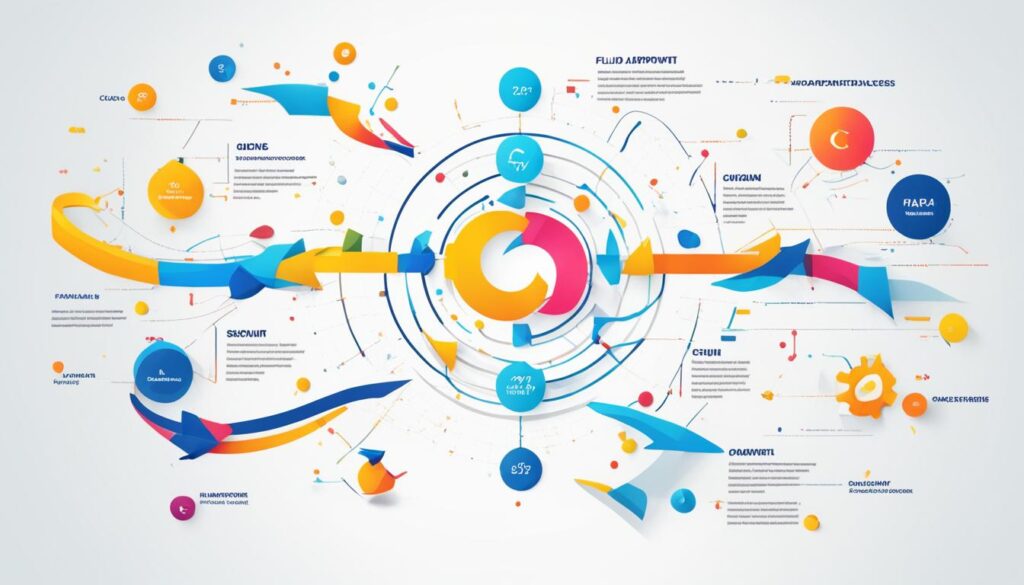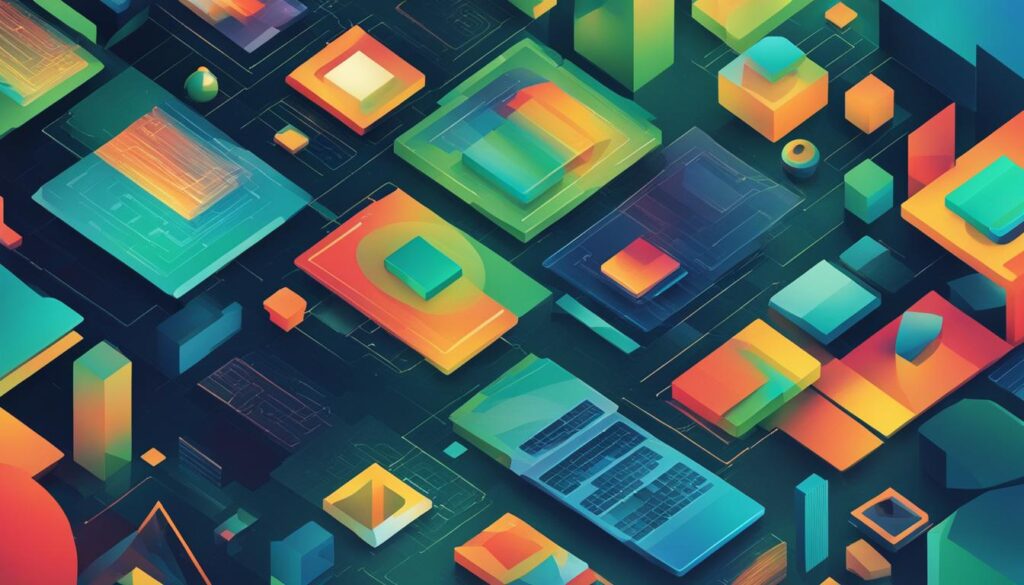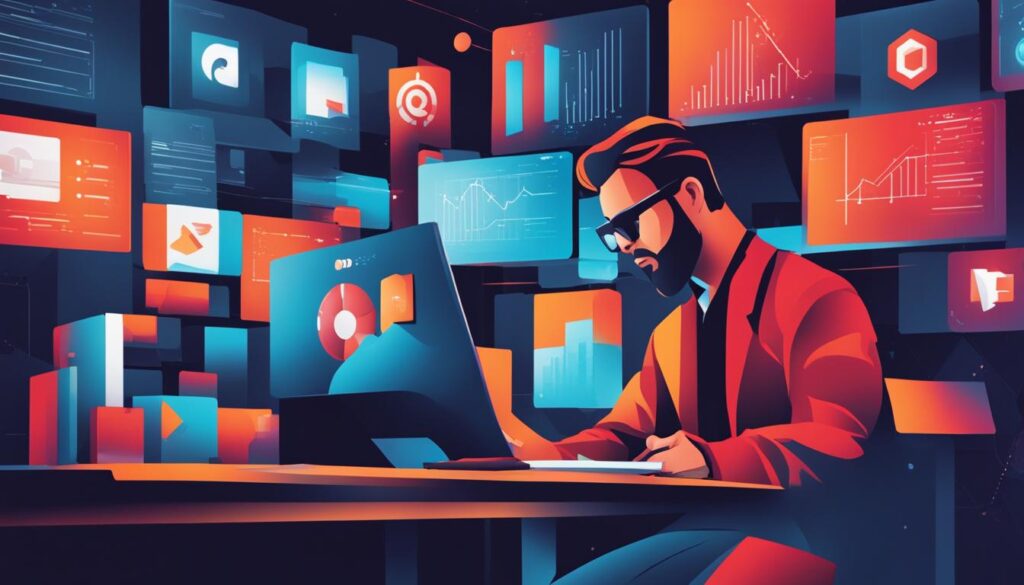When it comes to information technology (IT), choosing the right models is crucial for enhancing efficiency and achieving success. But with so many options available, it can be challenging to determine which IT models are best suited for your tech strategy. In this article, we will explore different IT models and their advantages and disadvantages, helping you make an informed decision for your business.
Contents
- 1 Understanding the Waterfall Development Model
- 2 Exploring Agile and Scrum Models
- 3 Considering Tech Stack Models for Web Development
- 4 Examining Different Software Development Models
- 4.1 1. Agile Software Development Model
- 4.2 2. DevOps Model
- 4.3 3. Dynamic System Development Model
- 4.4 4. Extreme Programming Development Model
- 4.5 5. Feature Driven Development Model
- 4.6 6. Joint Application Development Model
- 4.7 7. Lean Development Model
- 4.8 8. Prototype Model
- 4.9 9. Rapid Application Development Model (RAD)
- 4.10 10. Spiral Development Model
- 4.11 11. Waterfall Development Model
- 5 Weighing the Advantages and Disadvantages of Software Development Models
- 6 Conclusion
- 7 FAQ
- 7.1 What are the best IT models for information technology?
- 7.2 What is the Waterfall development model?
- 7.3 What are Agile and Scrum models?
- 7.4 What is a tech stack in web development?
- 7.5 What are some popular tech stack models for web development?
- 7.6 What are software development models?
- 7.7 What are the advantages and disadvantages of software development models?
- 7.8 How do I choose the right IT model for my needs?
- 8 Source Links
Key Takeaways:
- Consider different IT models to align with your specific tech needs and objectives.
- Understand the advantages and disadvantages of each IT model before making a decision.
- Waterfall model is ideal for projects with clear and stable requirements.
- Agile and Scrum models are suitable for projects with changing project environments.
- Choose the right tech stack models for web development based on programming languages and frameworks.
Understanding the Waterfall Development Model
The Waterfall development model is a sequential approach used in software development and project management. It is particularly suitable for projects with clear and stable requirements. Under this model, each stage of the development process is completed before moving on to the next stage, following a linear or waterfall-like progression.
This model is known for its simplicity and easy understanding. It is best suited for projects that require a structured approach and have a limited skillset available. The Waterfall model emphasizes strong project management and requires stakeholders to gather and document all the requirements thoroughly upfront before moving forward with design, development, and testing.
With the Waterfall model, each stage is completed in a predefined sequence:
- Requirements gathering and analysis
- System design
- Implementation
- Testing
- Deployment
- Maintenance
This sequential approach ensures clear deliverables for each stage and allows for a better understanding of the project’s progress. As one stage is completed, there is a natural hand-off to the next stage. This enables a systematic and structured development process, making it easier to manage dependencies and monitor progress.
“The Waterfall model provides a clear roadmap for development and ensures that each stage is completed thoroughly before moving forward. It is ideal for projects with stable requirements and limited skillsets.”
However, it’s essential to note that the Waterfall model is not well-suited for projects with uncertainty or evolving requirements. Once a stage is completed, it can be challenging to make changes without going back to the previous stage. This lack of flexibility makes it less suitable for projects where requirements may change frequently, as it could lead to delays and increased costs.
The Waterfall development model is widely used in industries such as construction, manufacturing, and defense, where the requirements tend to be stable and changes are costly. It provides a structured and predictable approach to software development, ensuring that each stage is completed before moving forward.
Exploring Agile and Scrum Models
When it comes to projects with unclear user requirements and changing project environments, the Agile and Scrum models are the perfect fit. These models provide a flexible and collaborative approach to project management, allowing for adaptability and continuous improvement.
The Agile model, known for its iterative approach, focuses on adaptive planning and embraces change throughout the project lifecycle. It allows for frequent evaluation and adjustments based on stakeholder feedback and changing priorities. By breaking down the project into smaller increments called “sprints,” the Agile model ensures a more iterative and efficient development process.
“Agile is not about getting it perfect; it’s about getting it better.”\ – Karen Martin
On the other hand, the Scrum model operates as a framework within the Agile approach, emphasizing collaboration, accountability, and transparency among team members. With clearly defined roles such as Scrum Master, Product Owner, and Development Team, Scrum ensures effective communication and efficient task management.
Both Agile and Scrum models are highly adaptable to the changing project environment and stakeholder requirements. They promote close collaboration between team members, stakeholders, and end-users, enabling a more efficient and productive development process.
Benefits of Agile and Scrum Models
The Agile and Scrum models offer several key benefits:
- Enhanced flexibility: The iterative nature of Agile and Scrum allows for easier adaptation to changing project requirements and priorities.
- Faster time-to-market: By breaking down the project into smaller sprints, Agile and Scrum models facilitate quicker delivery of functional software.
- Improved stakeholder engagement: Regular feedback loops and collaboration with stakeholders ensure their involvement throughout the development process.
- Better risk management: Agile and Scrum models promote early identification and mitigation of risks through continuous evaluation.
- Increased transparency: The use of visual boards and daily stand-up meetings in Scrum enhances transparency, facilitating better communication and alignment within the team.
By leveraging the Agile and Scrum models, organizations can navigate the complexities of changing project environments, deliver high-quality software, and effectively meet stakeholder expectations.

Considering Tech Stack Models for Web Development
In web development, the choice of tech stack plays a crucial role in building robust and scalable applications. A tech stack refers to the combination of frontend and backend technologies that work together to create digital products. In this section, we will explore different tech stack models and their suitability for various development needs and preferences.
Frontend Stack
The frontend stack is responsible for the visual and interactive aspects of a website or application. It encompasses the following technologies:
- HTML (Hypertext Markup Language): A markup language used to structure the content of web pages.
- CSS (Cascading Style Sheets): A style sheet language that defines the presentation and layout of web pages.
- JavaScript: A versatile programming language that enables dynamic and interactive features on websites.
An effective frontend stack ensures a seamless user experience by implementing engaging designs and smooth interactions.
Backend Stack
The backend stack handles server-side operations, database management, and the overall functionality of a web application. It includes the following components:
- Programming Languages: Backend development can be done using various programming languages such as Ruby, Python, and Java, each with its own strengths and areas of application.
- Frameworks: Backend frameworks like Express.js, Spring, and Django provide tools and libraries that streamline development processes and enhance efficiency.
- Web Servers: Web servers such as Apache and NGINX serve web applications and handle requests from clients.
- Databases: Backend development involves the integration and management of databases like MySQL, MongoDB, and PostgreSQL to store and retrieve data.
A well-rounded backend stack ensures secure data management, efficient processing, and smooth integration with the frontend.

“Choosing the right tech stack is like assembling the perfect team. Each component plays a crucial role in the success of your web development project.”
Tech Stack Models
There are several tech stack models available, each with its own unique advantages and suitability for different development needs. Let’s take a closer look at some popular tech stack models:
| Tech Stack Model | Description |
|---|---|
| LAMP | The LAMP stack combines the Linux operating system, Apache web server, MySQL database, and PHP programming language for robust web development. |
| .NET Core | .NET Core is a cross-platform framework that enables the development of web applications using languages like C# and F#. |
| MEAN | The MEAN stack utilizes MongoDB, Express.js, Angular, and Node.js to build powerful and scalable web applications. |
| MERN | Similar to MEAN, MERN employs MongoDB, Express.js, React, and Node.js to create feature-rich web applications. |
| MEVN | The MEVN stack combines MongoDB, Express.js, Vue.js, and Node.js to develop efficient and dynamic web applications. |
| Ruby on Rails | Ruby on Rails is a web development framework that uses the Ruby programming language to create highly productive and elegant applications. |
| Python | Python is a versatile programming language widely used for web development due to its simplicity, readability, and extensive library support. |
| Java | Java is a popular programming language known for its stability, scalability, and compatibility, making it suitable for enterprise-level web applications. |
Each tech stack model offers its own unique advantages and caters to specific development requirements. By selecting the right tech stack model, you can ensure an efficient and effective development process that aligns with your project objectives.
Examining Different Software Development Models
Software development models are architectural frameworks that guide the planning, configuration, and maintenance of information systems. Choosing the right model is crucial for successful software development. Let’s explore some popular software development models:
1. Agile Software Development Model
The Agile model emphasizes adaptability and customer collaboration. It follows an iterative approach, allowing for frequent changes and continuous improvement throughout the development process.
2. DevOps Model
The DevOps model combines development and operations, fostering collaboration and streamlining software deployment. It ensures efficient communication and automates processes for seamless delivery.
3. Dynamic System Development Model
The Dynamic System Development model focuses on timely delivery within a reasonable budget. It follows an iterative and incremental approach, enabling flexibility and progressive development.
4. Extreme Programming Development Model
The Extreme Programming model emphasizes customer involvement and rapid feedback. It utilizes short development cycles, frequent testing, and the use of cutting-edge technologies.
5. Feature Driven Development Model
The Feature Driven model focuses on identifying and delivering software features. It allows multiple teams to work simultaneously, ensuring effective feature development and collaboration.
6. Joint Application Development Model
The Joint Application model involves clients and end-users in the design and development process. It promotes collaboration, resulting in a solution that meets user expectations and business requirements.
7. Lean Development Model
The Lean Development model aims to eliminate waste and maximize efficiency. It focuses on creating value for the customer by optimizing the development process and minimizing unnecessary activities.
8. Prototype Model
The Prototype model involves building a working model of the software to gather feedback and validate requirements. It allows for testing and refinement, ensuring the final product meets user expectations.
9. Rapid Application Development Model (RAD)
The Rapid Application Development model emphasizes quick development cycles and active user involvement. It aims to deliver high-quality software within accelerated timeframes.
10. Spiral Development Model
The Spiral model combines elements of the waterfall and prototyping models. It encourages risk evaluation and continuous refinement throughout the development process.
11. Waterfall Development Model
The Waterfall model follows a sequential approach, with each phase of development flowing downwards like a waterfall. It is ideal for projects with well-defined and stable requirements.

Each software development model offers a unique approach and has its own advantages and disadvantages. The choice of model depends on the specific requirements and goals of your software development project. By understanding the different models available, you can select the one that best suits your business needs and ensures successful software delivery.
| Software Development Model | Advantages | Disadvantages |
|---|---|---|
| Agile | Frequent customer collaboration, adaptability to changes | Complexity for large-scale projects |
| DevOps | Improved collaboration, faster software deployment | Requires a cultural shift and change in traditional methods |
| Dynamic System Development | Flexible and progressive development, timely delivery | Potential for scope creep and budget overruns |
| Extreme Programming | Customer involvement, rapid feedback, use of cutting-edge technologies | Potentially higher development costs, demands skilled team |
| Feature Driven | Focus on software features, effective team collaboration | May not be suitable for individual developers |
| Joint Application | Client and end-user involvement, improved solution alignment | Requires significant time commitment from stakeholders |
| Lean Development | Efficient development process, value creation for customers | Relies on the skill set of the development team |
| Prototype | Testing and improvement, validation of requirements | Potential for additional demands from clients |
| Rapid Application Development (RAD) | Quick development cycles, active user involvement | Requires well-defined requirements and proper implementation |
| Spiral | Risk evaluation, continuous refinement | Potential for increased complexity and management overhead |
| Waterfall | Simplicity, clear milestone-based progress | Less adaptability to changes, limited customer feedback |
Weighing the Advantages and Disadvantages of Software Development Models
Each software development model has its own set of advantages and disadvantages. Let’s take a closer look at some popular models and their key characteristics:
Agile Software Development Model
The Agile model allows for frequent alterations based on project requirements and customer feedback. It promotes collaboration, adaptability, and a focus on delivering value to the customer. However, it may take more time to develop complex software under this model.
DevOps Model
The DevOps model integrates development and operations departments, fostering better collaboration and faster deployment. It promotes automation and continuous improvement. However, implementing the DevOps model requires a change in traditional methods and may require additional investments in infrastructure.
Dynamic System Development Model
The Dynamic System Development model ensures timely delivery within a reasonable budget. It emphasizes iterative development and user involvement throughout the process. However, it requires a progressive development approach and careful project management to balance time and budget constraints.
Extreme Programming Development Model
The Extreme Programming model emphasizes customer involvement and uses cutting-edge technologies. It focuses on short development cycles and continuous testing. However, due to its intensive collaborative nature, it can be costly and demanding.
Feature Driven Model
The Feature Driven model focuses on software features and enables multiple teams to work simultaneously. It emphasizes iterative development and scalability. However, it may not be suitable for individual developers or small-scale projects.
Joint Application Model
The Joint Application model involves clients and end-users in the design and development process. It promotes active participation and collaboration. However, it requires extensive commitment and time from all stakeholders.
Lean Development Model
The Lean Development model aims to create software quickly and efficiently by eliminating waste and focusing on value. It encourages continuous improvement and customer satisfaction. However, it relies heavily on the skill set and efficiency of the development team.
Prototype Model
The Prototype model allows for testing and improvement before the final product is developed. It helps validate ideas and collect user feedback. However, it can lead to additional demands from clients and may require multiple iterations.
Rapid Application Development Model (RAD)
The Rapid Application Development model delivers high-quality software in an accelerated time frame. It emphasizes user involvement and iterative development. However, to succeed with RAD, a well-defined requirement and proper implementation are necessary.

As you can see, each software development model has its own pros and cons. It is essential to carefully evaluate your project requirements, team capabilities, and customer needs to determine which model aligns best with your goals and objectives. The right choice can lead to increased efficiency, improved collaboration, and successful software development.
Conclusion
Choosing the right IT models for your tech needs is crucial for success in the information technology industry. By understanding different models, including the Waterfall, Agile, Scrum, and various software development models, you can make informed decisions that align with your project objectives.
Remember to weigh the advantages and disadvantages of each model and consider your specific requirements and resources before making a decision. Each model offers unique benefits and drawbacks, so it is important to carefully evaluate which approach best suits your project.
Leveraging the right IT models can enhance efficiency, productivity, and the overall success of your tech projects. Whether you need a sequential approach, iterative flexibility, or a tailored tech stack, choosing the right model will set the foundation for achieving your goals. Stay informed, evaluate your options, and make confident decisions to drive your tech projects forward.
FAQ
What are the best IT models for information technology?
The best IT models for information technology include the Waterfall model, Agile model, Scrum model, and various software development models like Agile Software Development, DevOps, Dynamic System Development, Extreme Programming, Feature Driven, Joint Application, Lean Development, Prototype, Rapid Application Development (RAD), Spiral, and Waterfall.
What is the Waterfall development model?
The Waterfall development model is a sequential approach that is ideal for projects with clear and stable requirements. It involves completing each stage of the development process before moving on to the next.
What are Agile and Scrum models?
Agile is an iterative approach that focuses on adaptive planning and continuous improvement. Scrum is a framework that emphasizes collaboration and accountability among team members. Both models are ideal for projects with unclear user requirements and changing project environments.
What is a tech stack in web development?
A tech stack consists of frontend and backend technologies that work together to build digital products. The frontend stack includes HTML, CSS, and JavaScript, while the backend stack includes programming languages, frameworks, web servers, and databases.
What are some popular tech stack models for web development?
Some popular tech stack models for web development include LAMP, .NET Core, MEAN, MERN, MEVN, Ruby on Rails, Python, and Java. Each model offers various advantages and is suitable for different development needs and preferences.
What are software development models?
Software development models are architectural frameworks that guide the planning, configuration, and maintenance of information systems. They provide a structured approach to software development and help ensure successful project completion.
What are the advantages and disadvantages of software development models?
Each software development model has its own set of advantages and disadvantages. For example, the Agile model allows for frequent alterations based on project requirements and customer feedback, but it may take more time for complex software. It’s important to consider these trade-offs when selecting a model for your project or business.
How do I choose the right IT model for my needs?
To choose the right IT model for your needs, consider your project requirements, resources, and team dynamics. Assess the advantages and disadvantages of each model and determine which aligns best with your objectives and constraints.




